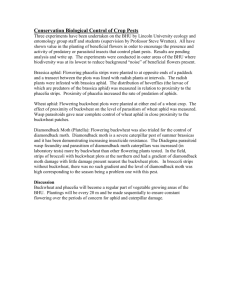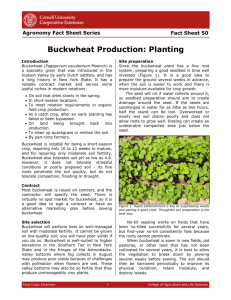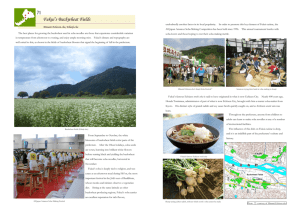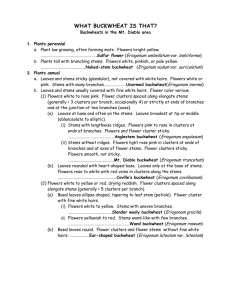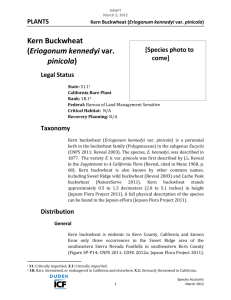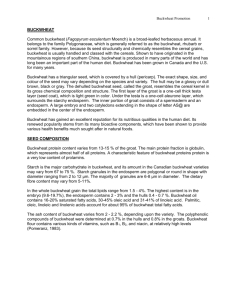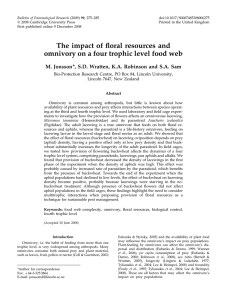Buckwheat Master Gardener Newspaper Articles
advertisement
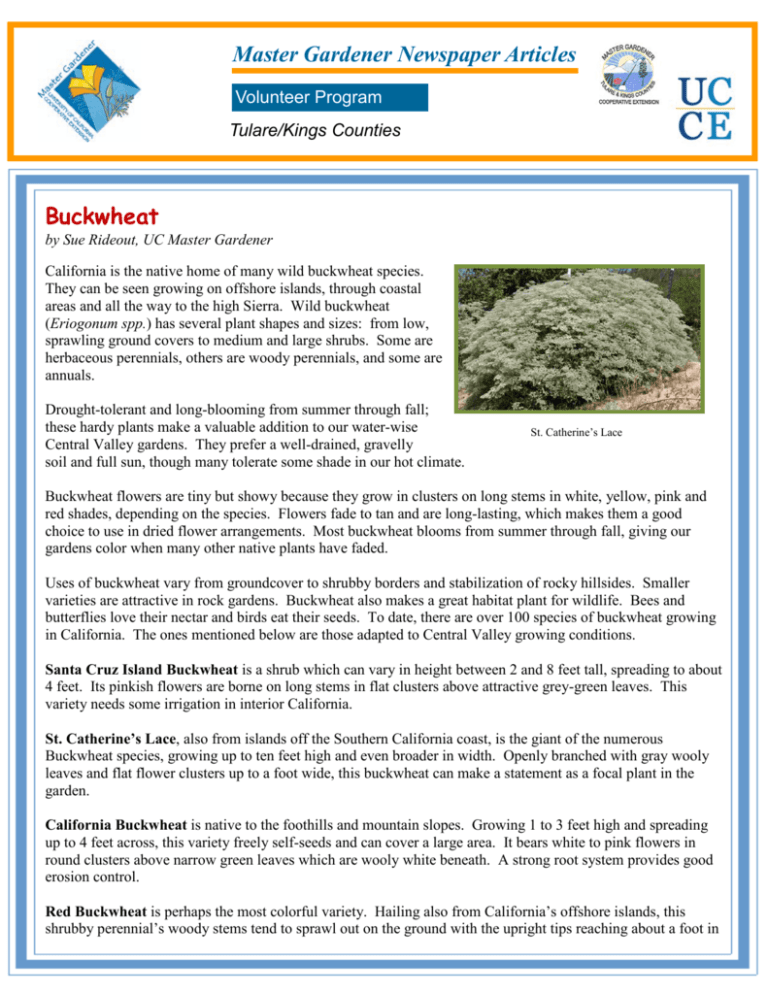
Master Gardener Newspaper Articles Volunteer Program Tulare/Kings Counties Buckwheat by Sue Rideout, UC Master Gardener California is the native home of many wild buckwheat species. They can be seen growing on offshore islands, through coastal areas and all the way to the high Sierra. Wild buckwheat (Eriogonum spp.) has several plant shapes and sizes: from low, sprawling ground covers to medium and large shrubs. Some are herbaceous perennials, others are woody perennials, and some are annuals. Drought-tolerant and long-blooming from summer through fall; these hardy plants make a valuable addition to our water-wise Central Valley gardens. They prefer a well-drained, gravelly soil and full sun, though many tolerate some shade in our hot climate. St. Catherine’s Lace Buckwheat flowers are tiny but showy because they grow in clusters on long stems in white, yellow, pink and red shades, depending on the species. Flowers fade to tan and are long-lasting, which makes them a good choice to use in dried flower arrangements. Most buckwheat blooms from summer through fall, giving our gardens color when many other native plants have faded. Uses of buckwheat vary from groundcover to shrubby borders and stabilization of rocky hillsides. Smaller varieties are attractive in rock gardens. Buckwheat also makes a great habitat plant for wildlife. Bees and butterflies love their nectar and birds eat their seeds. To date, there are over 100 species of buckwheat growing in California. The ones mentioned below are those adapted to Central Valley growing conditions. Santa Cruz Island Buckwheat is a shrub which can vary in height between 2 and 8 feet tall, spreading to about 4 feet. Its pinkish flowers are borne on long stems in flat clusters above attractive grey-green leaves. This variety needs some irrigation in interior California. St. Catherine’s Lace, also from islands off the Southern California coast, is the giant of the numerous Buckwheat species, growing up to ten feet high and even broader in width. Openly branched with gray wooly leaves and flat flower clusters up to a foot wide, this buckwheat can make a statement as a focal plant in the garden. California Buckwheat is native to the foothills and mountain slopes. Growing 1 to 3 feet high and spreading up to 4 feet across, this variety freely self-seeds and can cover a large area. It bears white to pink flowers in round clusters above narrow green leaves which are wooly white beneath. A strong root system provides good erosion control. Red Buckwheat is perhaps the most colorful variety. Hailing also from California’s offshore islands, this shrubby perennial’s woody stems tend to sprawl out on the ground with the upright tips reaching about a foot in height. The stems bear round clusters of rosy flowers. Red buckwheat requires some shade in the Central Valley. Sulfur Flower should be familiar to anyone who has visited the mountains. This low-growing buckwheat can color whole mountain sides in the Sierra Nevada. It can vary from low mats to shrubs three feet tall. For our gardens, the variety Shasta Sulfur makes a low, dense mound with large bright yellow flower clusters and adapts well to varying conditions. It is somewhat unusual in its bloom time: from early spring into summer. Wright’s Buckwheat, native to eastern and southern California, forms a dense silvery green mound up to 3 feet high but is usually more of a low mat. It sports tiny white or pink flowers in clusters on 6 to 12 inch stems. This tidy plant can find its place in our rock gardens. Sulfur flower While several species of Buckwheat make great native specimens in our water-wise gardens, they can be difficult to find in nurseries, which may only carry one or two kinds. More varieties can be found in catalogs, and may also be available for purchase on the Internet, or in native plant nurseries. Some types are easily propagated from seed. Their dependability and flowering habit in the garden make the hunt for wild Buckwheat well worthwhile. January 29, 2015

